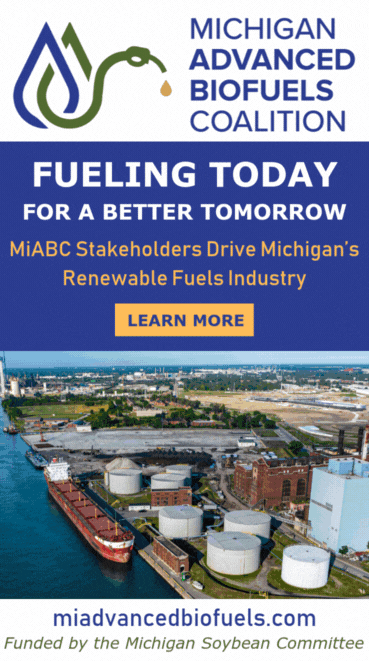Defossilizing Chemical Production
- Ju Zhu
- Jun 20
- 5 min read

The chemical sector’s future is being shaped by industrial demand for diversified inputs, regulatory pressures and changing consumer priorities.
Almost 90 percent of feedstocks used to produce chemicals are currently derived from fossil fuels such as crude oil, natural gas and coal. These sources have been the backbone of the chemical industry for decades. They provide the initial raw materials needed to produce intermediate chemicals through manufacturing processes and, ultimately, a vast array of downstream products integral to our modern society and economy. As the global population grows and industrialization continues—driving demand for more consumer goods, agricultural products and technological advancements—fossil feedstocks will no doubt continue to play a role, with demand projected to increase in the foreseeable future.
The reliance on fossil-based feedstocks, however, is not without its challenges. The extraction and processing of these materials contribute to greenhouse-gas emissions, air and water pollution, and ecological disruption. Approximately 6 percent of global CO2-equivalent emissions are attributed to the chemical industry. Additionally, the finite nature of fossil resources raises concerns about long-term sustainability and supply security. These issues are compounded by fluctuating prices and geopolitical tensions that can disrupt supply chains and affect market stability.
A combination of regulatory and voluntary forces is propelling the shift from fossil feedstocks to more sustainable alternatives. Initiatives like the European Climate Law, the U.S. Federal Sustainability Plan and ISO Net Zero Guidelines mandate renewable energy use, providing financial incentives for biobased technology development and enforcing stricter environmental regulations. As such, many chemical companies are setting ambitious sustainability targets regarding emission reduction and increasing their use of biobased and circular raw materials. In parallel, consumer demand for sustainable products has been growing, as more people prioritize environmental responsibility and are willing to pay a premium for ecofriendly options.
While the chemical industry may currently be based on fossil energy, its future stands to be shaped by an increasing industrial demand for diversified feedstocks, regulatory pressures and changing consumer demand. As such, we can expect to see a greater embrace of defossilization and the expansion of biobased feedstocks—with catalysts playing a crucial role.
Decarbonization or Defossilization?
A sustainable chemical industry does not necessarily require comprehensive “decarbonization” since most chemicals inherently contain carbon atoms essential to their structure. It is possible to significantly defossilize the industry, however, by replacing fossil feedstocks with alternative nonfossil sources of carbon (such as reusable plastic waste and renewable biobased feedstocks), facilitating the transition to a net-zero chemical industry.
Despite its importance, defossilization faces several significant hurdles and challenges that have slowed its widespread implementation. These include technological limitations in developing and scaling up the use of nonfossil alternatives, high economic costs compared to cheaper fossil fuels and complex supply-chain issues for nonfossil materials. Additionally, inconsistent regulations and lack of supportive policies, along with the need to increase market acceptance and consumer demand for nonfossil-based products, further complicate the transition.
While defossilization presents challenges, it also offers opportunities for innovation and the development of new products and processes, opening up new markets and fostering growth. Biobased feedstocks have evolved as a key component in defossilization, attracting growing interest and significant efforts towards technological advancements.

Biobased Feedstocks: The Current State
Biobased feedstocks are renewable raw materials derived from biological sources. They are generally classified into three main categories:
First generation, derived from traditional edible crops such as corn, sugarcane and soybeans.
Second generation, referring to nonfood cellulosic crops, residues or waste from agriculture, forests and municipalities.
Third generation, obtained from nontraditional organisms, typically nonland-based sources like algae.
These diverse sources offer flexibility and the potential to tap into locally available resources, thereby reducing dependency on imported fossil fuels. The chemical industry can integrate biobased feedstocks into existing production processes or develop new processes specifically designed for these materials, depending on the varying levels of difficulty.
Utilizing first-generation biobased feedstocks is relatively straightforward due to their well-studied chemical composition and established processing technologies. Several biobased products sourced from these feedstocks are already in commercial production. For example, NatureWorks manufactures polylactic acid (PLA) from corn starch for biodegradable plastics; Raízen produces bioethanol from sugarcane, a well-established biofuel; and Braskem produces biobased polyethylene from sugarcane ethanol. Despite their presence, these biobased products currently represent a small fraction of the overall market. While first-generation biobased feedstocks have been instrumental in advancing the biofuel industry and remain essential to current production, especially in regions like Southeast Asia, there are ongoing efforts to optimize their use while improving sustainability.
A Catalytic Necessity
As the generations of biobased feedstocks advance, their utilization difficulty increases due to their inherently complex composition. Notably, these feedstocks help mitigate food competition and utilize waste, offering greater environmental benefits and future potential.
In the realm of second-generation biobased feedstocks, Evonik Catalysts has achieved considerable success by using alkoxide catalysts to produce sustainable biodiesel fuel from waste fats such as used cooking oil or tallow. Nonfood cellulosic crops and agricultural/forest residues, when used to produce higher-value-added bioproducts—such as furan-based chemicals and materials—typically involve more complex and costly decomposition and conversion processes due to their high cellulose and lignin content. As such, the solution requires active collaboration among catalyst-manufacturing companies, key industry stakeholders and companies across the entire value chain to collectively facilitate the industrial scale production and application of these nonfood biomass-derived chemicals and materials.
The challenges are even greater with third-generation biobased feedstocks. Considerations that need to be taken into account include optimizing algae-growth conditions, efficient harvesting, cost-effective conversion processes, scaling up production and more.
Addressing these challenges requires continuous—and, in some cases, disruptive—technological innovations. By leveraging advanced catalytic processes, the industry can optimize the conversion of biobased feedstocks into high-value products more efficiently and cost effectively, improving scalability and economic viability. With a focus on biobased feedstocks, Evonik continues to prioritize research and development in catalyst innovation to enhance the efficiency and sustainability of converting renewable resources into valuable products.
Evonik’s Next Gen catalysts enable defossilization of the process industry by driving more efficient and sustainable production methods. The company’s alkoxides catalysts portfolio assists in reducing energy consumption and carbon footprint, and optimizing resource efficiency through improved selectivity and yield, which helps maximize biodiesel output while minimizing waste. These catalysts also facilitate the use of alternative raw materials to reduce reliance on fossil fuels, enabling biobased feedstocks to be transformed into valuable fuels, chemicals and materials for greater circularity.
Conclusion
As the chemical industry seeks to reduce reliance on fossil fuels, an exhaustible resource that poses significant environmental and economic challenges, biobased feedstocks offer a renewable and sustainable alternative. In theory, the production and use of these alternative feedstocks could be sustained indefinitely. Financial incentives, continuous innovation and robust collaboration are necessary, however, to increase adoption—similar to how the fossil-fuel industry has historically been supported. This transition is both an environmental necessity and a strategic opportunity to future proof the wider industry.

Author: Ju Zhu
Innovation and Growth Manager
Evonik Catalysts


































